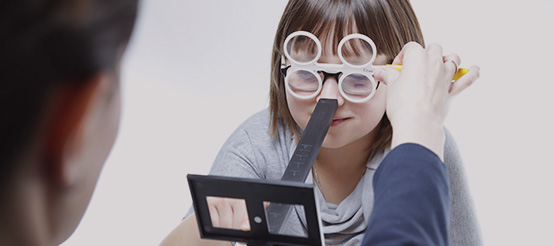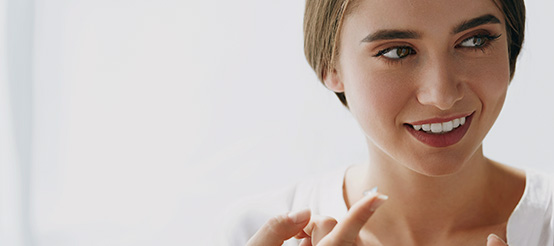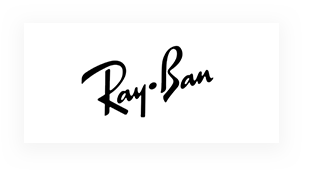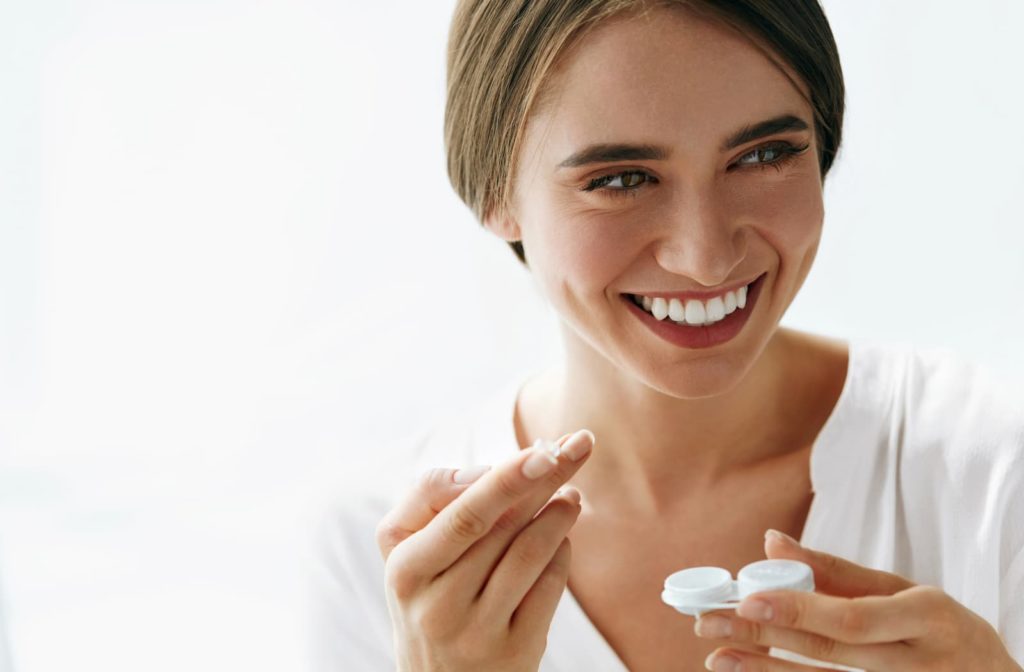
If you are considering wearing contact lenses you should book an appointment with your optometrist. Not only will your optometrist determine your contact lens prescription (which is different from your eyeglasses prescription), but they can also help you determine which style of contact lens is best suited to your unique needs.
Once your eyes have been examined your optometrist will provide you with one or more trial pairs in your prescription so you can test them out and teach how to safely insert, remove, and care for your new contact lenses.
Depending on the style of contact lens you wear your specific care instructions will differ. However, there are a few general dos and don’ts that all contact lens wearers should keep in mind.
The Do’s of Contact Lens Care
Cleaning Instructions
- Always wash your hands thoroughly before handling the contacts or touching your eyes. Use mild, non-cosmetic soap and dry your hands with a non-lint cloth or tissue.
- You should be carefully and regularly cleaning and disinfecting your lenses as directed by your optometrist. There are different cleaning systems and regimes available, and which one you choose will depend a lot on the style of contact lens you wear. If you have allergies or find that your eyes tend to form protein deposits, you should let your optometrist know so that they can suggest an appropriate cleaning solution to suit your unique needs.
- Never reuse your cleaning solution. Always use fresh cleaning solution when cleaning or storing your contact lenses.
- You can clean your contact lenses by squirting some cleaning solution into your palm and gently rubbing with your index finger in the palm of your hand. This can help remove any buildup on your contact lenses. Rinse your contact lenses with cleaning solution when you are finished. This is called the “rub and rinse” method.
- Only ever store your contact lenses in a contact lens storage case. You should also replace the case every 3 months or whenever it becomes damaged.
- Make sure the tip of the solution bottle does not touch any surface and make sure its lid is closed tightly when not in use. This helps keep bacteria from contaminating your cleaning solution. If you suspect your cleaning solution has become contaminated, you should not use it. Discard the bottle and open a fresh one.
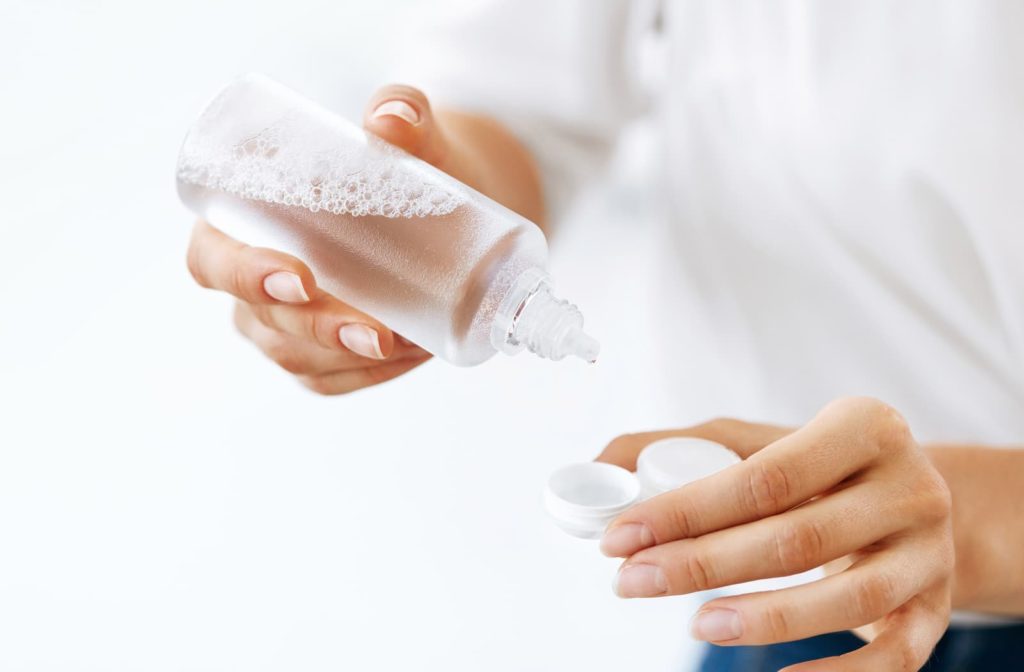
Wear Instructions
- Always follow your optometrist’s wear instructions and the wear instructions on the package. Never wear your contact lenses for longer than the specified time, even if your eyes still feel comfortable. You should also never sleep with your contact lenses in, unless they are explicitly designed for overnight wear.
- Always remove your contact lenses before having a shower or going swimming.
- Visit your optometrist for regular eye exams and contact lens exams. Contact lenses do warp with time, and the shape of your cornea can also change with time. Regular exams will ensure that your contact lenses are still the correct shape for your eyes and can continue to meet your visual needs.
- Blink thoroughly and regularly to keep your lens moist and clean. When we don’t blink enough, it can leave our eyes feeling dry and irritated.
- If you are wearing your contact lenses in a situation where you may get dust in your eyes (such as gardening), make sure you wear protective goggles over your contact lenses. You may also choose to wear your glasses instead during these activities.
- Put on your contacts before putting on makeup and always remove your contacts before removing your makeup. This helps prevent makeup from getting on your contact lenses.
The Don’ts of Contact Lens Care
- Never use tap water to clean or store your lenses or to clean your lens case. Tap water isn’t sterile and can’t properly disinfect your contact lenses or your case.
- Never use creamy soap. Creamy soap can leave films which if it gets on your lenses, it can cause irritation and possibly blurry vision.
- Never use a homemade saline solution. Putting anything in your eye that doesn’t belong there can damage your eyes and even lead to blindness.
- Never put contact lenses in your mouth or moisten it with saliva as it is full of bacteria and potentially infectious.
- Never sleep in your lenses unless your contact lenses are specifically designed for overnight wear.
- Ideally, you should avoid wearing your contact lenses in pools, lakes, hot tubs. If you must wear your contact lenses in one of these locations you should wear swimming goggles over top. This can help prevent unsterilized water from getting in your eyes.
- You should never share your lens with others, and never wear another person’s contact lenses. Not only are your contact lenses made using your unique prescription and shaped for your eyes alone but wearing someone else’s contact lenses (especially if they have been worn before) can allow harmful bacteria to enter your eye.
- You should never use products that have not been recommended by your optometrist to clean and disinfect your lenses.
- Do not use any eye medications or eye drops without consulting your optometrist first.
- Always take care while using aerosol sprays. Close your eyes to avoid the spray getting into your eyes as such products may leave a residual film on your lens and could damage your eyes.
- Never rub your eyes vigorously while wearing your lenses.
- Keep your contact lenses and their storage case away from excessive heat.
- Never transfer your cleaning solution into a different bottle. It will no longer be sterile and, therefore, not useable.
- Never use your fingernails to insert, remove, or pick up your contact lenses. Instead, use your fingertips. Using your fingernails may cause you to scratch your cornea or damage your contact lenses.
We rely on our eyes for so much, so it is vital that we take appropriate steps to safeguard our vision and eye health. If you choose to wear contact lenses you need to keep them clean and in good repair to ensure they are safe to use. If you ever experience eye pain while wearing your contact lenses you should contact your optometrist immediately or proceed to the nearest emergency room or drop-in clinic.










